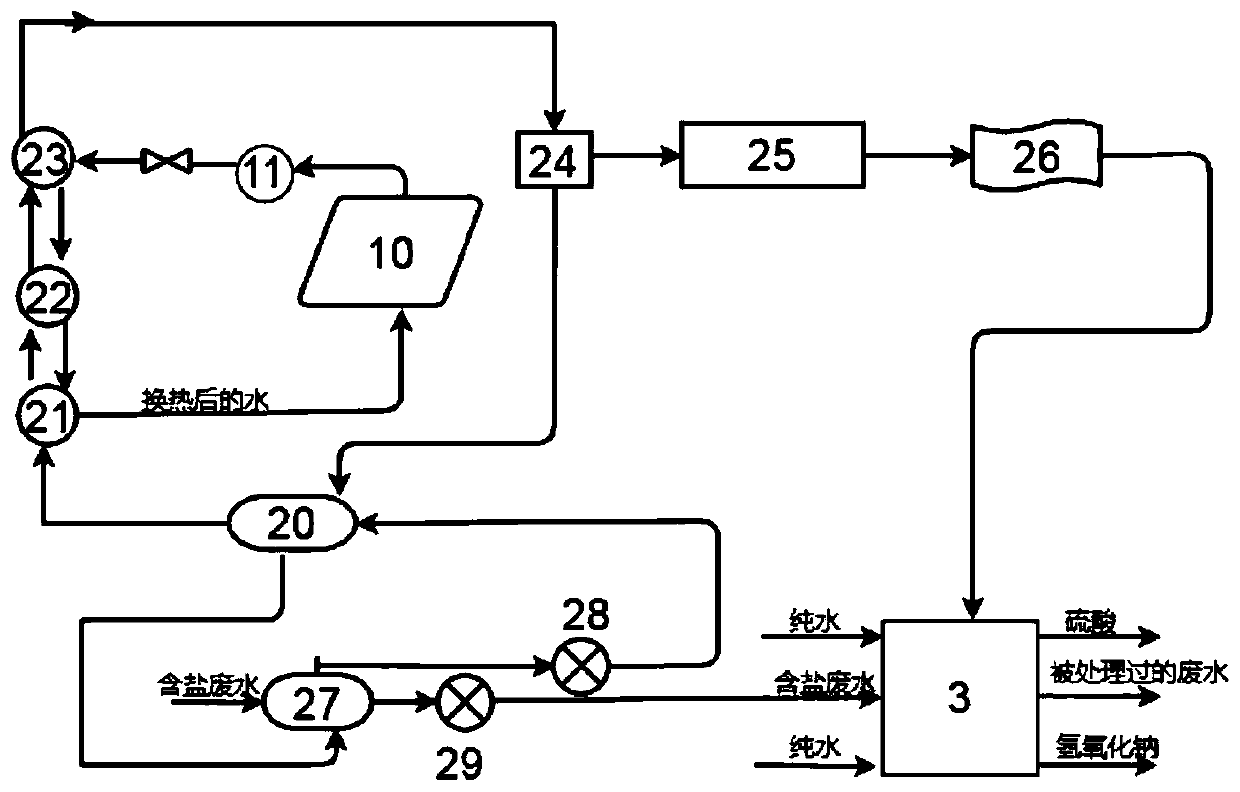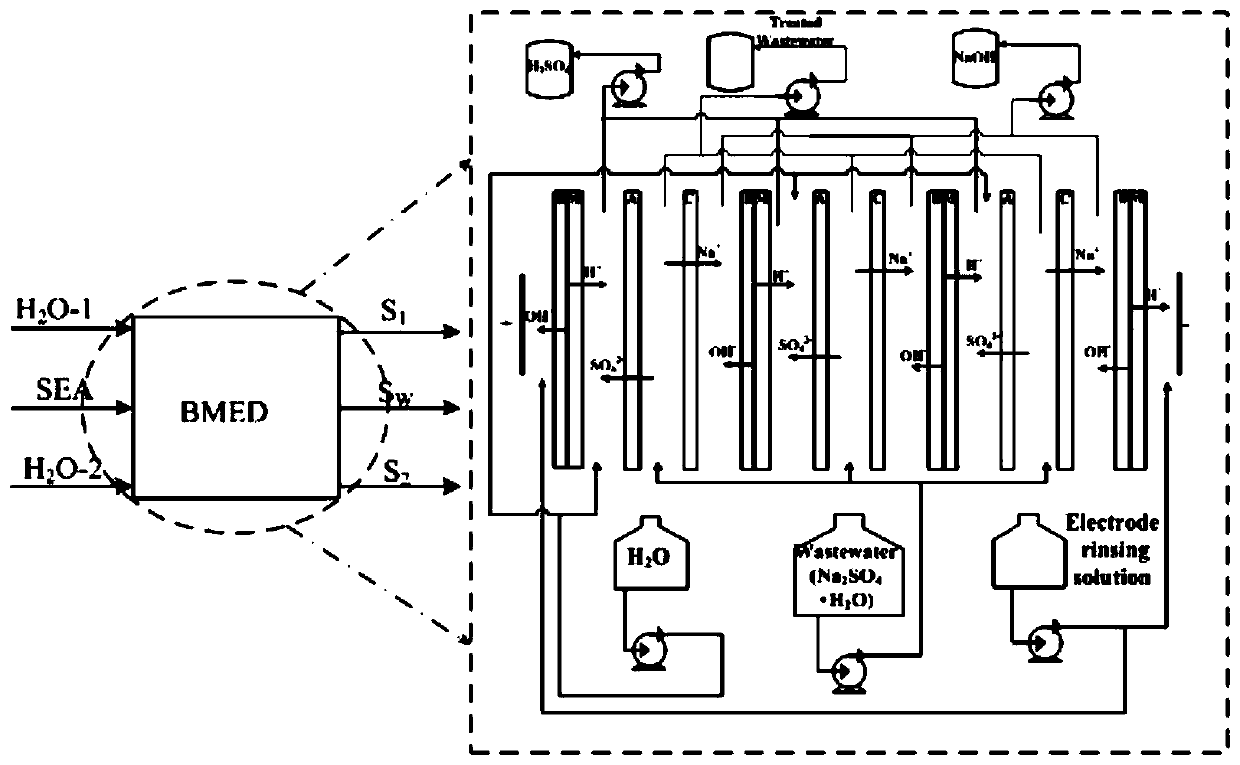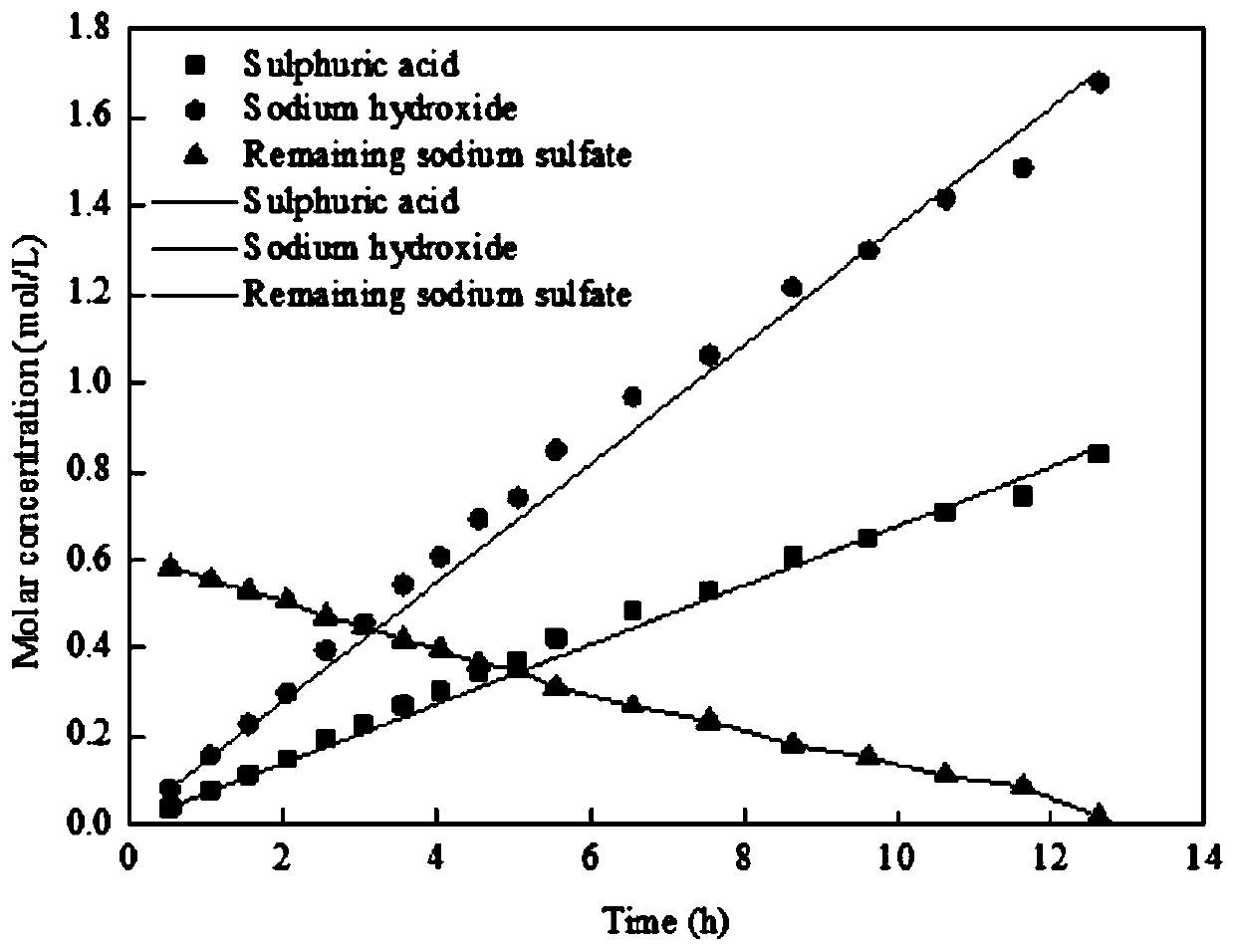Method for treating wastewater based on solar organic Rankine cycle and simulation method of wastewater treatment process
A technology for treating wastewater and Rankine cycle, applied in water/sewage treatment, water/sewage treatment equipment, water/sludge/sewage treatment, etc., to achieve accurate real-time simulation effects
- Summary
- Abstract
- Description
- Claims
- Application Information
AI Technical Summary
Problems solved by technology
Method used
Image
Examples
Embodiment 1
[0048] Such as figure 1 Shown, a kind of device based on solar organic Rankine cycle treatment waste water, described device comprises solar energy system, Organic Rankine cycle system and bipolar membrane electrodialysis system;
[0049] The solar energy system includes a solar heat collecting plate 10, and the solar heat collecting plate 10 is connected with an insulated water tank 11; the solar heat collecting plate 10 is a flat plate heat collecting plate, and the inclination angle with the ground is 30 degrees;
[0050] The organic Rankine cycle system includes an organic working fluid heat exchanger 20, which is sequentially connected to a preheater 21, an evaporator 22, a superheater 23, a turbine 24, and a generator 25. The working medium heat exchanger 20 is connected to the condenser 27 through the organic working medium circulation pump 28, the heat preservation water tank 11 is connected to the superheater 23, the solar collector plate 10 is connected to the prehea...
Embodiment 2
[0053] Utilize the device described in embodiment 1 to process the saline waste water containing mass fraction of 8% sodium sulfate produced by catalytic cracking flue gas wet desulfurization, such as figure 1 As shown, the specific process is as follows:
[0054] (1) Water collects heat under the effect of the solar collector plate 10 to generate hot water and store it in the thermal water tank 11;
[0055] (2) The hot water in the thermal water tank 11 described in step (1) is used as a heat source to heat the n-pentane flowing through the preheater 21, the evaporator 22 and the superheater 23, and the n-pentane is finally heated to a superheated gas state, The water after heat exchange with n-pentane flows back to the solar collector plate 10 to continue heat collection;
[0056] (3) The n-pentane heated to the superheated gas state described in step (2) enters the turbine 24 to expand and do work to drive the generator 25 to generate electricity and output electric energy...
Embodiment 3
[0068] Utilize chemical engineering software Aspen plus to simulate the waste water treatment process of embodiment 2, described simulation process is as follows:
[0069] (1) Use the USER2 module in Aspen plus to draw the basic flow chart of the bipolar membrane electrodialysis process in the embodiment 2 step (5) as Figure 5 Shown, and input the flow rate, composition, temperature and pressure of each stream of feed in Aspen plus software as shown in Table 1.
[0070] Table 1 Input information of each material stream in Aspen plus software
[0071]
[0072]
[0073] In Table 1, Temperature: the temperature of each stream of feed; Pressure: the pressure of each stream of feed; Volumeflow: the volume flow of each stream of feed; Mass concentration: the mass concentration of each stream of feed; H 2 O-1: water passed into the acid chamber; SEA: saline wastewater passed into the salt chamber; H 2 O-2: Water passed through the alkali chamber.
[0074] (2) Define the use...
PUM
| Property | Measurement | Unit |
|---|---|---|
| boiling point | aaaaa | aaaaa |
Abstract
Description
Claims
Application Information
 Login to View More
Login to View More - R&D
- Intellectual Property
- Life Sciences
- Materials
- Tech Scout
- Unparalleled Data Quality
- Higher Quality Content
- 60% Fewer Hallucinations
Browse by: Latest US Patents, China's latest patents, Technical Efficacy Thesaurus, Application Domain, Technology Topic, Popular Technical Reports.
© 2025 PatSnap. All rights reserved.Legal|Privacy policy|Modern Slavery Act Transparency Statement|Sitemap|About US| Contact US: help@patsnap.com



